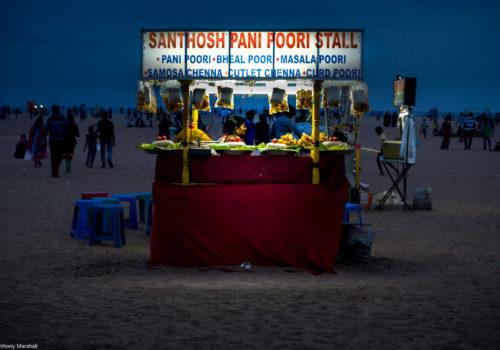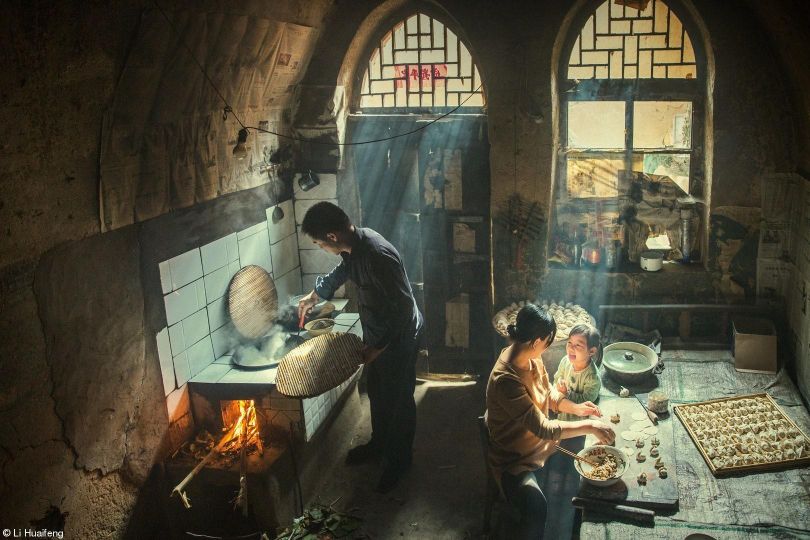On the occasion of the upcoming Pink Lady® Food Photographer of the Year, The Eye of Photography discussed developments in food photography with Michael Pritchard, director of Education and Public Research at the Royal Photographic Society.
Michael Pritchard, could you tell us about the genesis of food photography?
Food and its associated accoutrements have been associated with photography from its earliest days in the 1840s when the inventor of negative-positive photography Henry Talbot photographed a table set for tea and well as other still subjects of crockery, jugs and plates. Other photographers from this period photographed game: pheasant, rabbit, fruit and vegetables – much as painters had traditionally done. Photography in some ways perpetuated a traditional artistic tradition, but it also represented the technical limitations of the calotype, daguerreotype and collodion process which had exposures ranging from minutes to several seconds.
How has food photography evolved since then?
Food photography has evolved alongside photography to reflect the wider artistic and documentary trends in photography from the 1850s, through pictorialism, ‘straight’ photography, modernism, documentary and modern aesthetics. These artistic trends have also been overlaid with commercial and advertising needs which reflected the developing of new printing technologies and the growth of magazines and newspapers reproducing photographs in black and white and then colour. So the demand for photography of food has grown enormously to feed the press and the modern interest in food and cooking. Of course, the rise of social media has also changes how food is photographed and shared – it’s a rare meal that one does not see a smartphone being used to photograph a plate of food whether it’s within a 3* Michelin restaurant or local brasserie.
What are the stakes of food photography today ?
The commercial photography of food has been a key trend with thousands of books being published which all demand high-end food photography, that is technically perfect, and showing the food to entice the consumer. Add in to the this colour supplements, magazines and the need for online and moving image ‘content’ then the food photographer, stylist and home economist are in much demand. The blogger and influencer, too, bring a new dynamic as to how food can be represented.
How does the British audiences receive and understand food photography?
The British audiences are not dissimilar to others in Europe and elsewhere receiving images of food through social media, print (magazines and books) and television of course – and through exhibitions such as Pink Lady Food Photographer of the Year. It show the breadth of food photography which can range from street photography, documentary work around the impact of food production as well as magazine and book photography and art photography.
In Japan, Nobuyoshi Araki is quite known for his food photography. What is the place of this discipline throughout the world?
There is a large conversation to be had about how photographers such as Araki show and use food. His project documenting meals with his late wife is about using food to explore emotion and loss rather than the food per se. Using food means that it will have an appeal to audiences and allow them to explore wider issues and emotions. Susan Bright’s book on food photography and others explore some of the historical and contemporary themes around food photography in greater depth.
What would be your favourite food photograph ?
I like Weston’s peppers and some of the classic , but if I had to choose then I would opt for Roger Fenton’s still lives. His mastery of the collodion process makes one salivate at the tables of grapes, fruit, pineapples and have a richness and quality that one can’t achieve even with digital techniques.
How did you join the jury of the Pink Lady® Food Photographer of the Year competition ?
I was invited by the founder of the PLFPotY Caroline Kenyon to become a selector and it’s a real honour to be able to review the entries and, with the wider selection panel, be able to help select the exhibition and winners. We all have a relationship with food so it is not a hardship to go through thousands of images!
How do you think this competition participates in the broadening of the definition of food photography?
I think the PLFPotY is helpful in broadening how the public sees food photography beyond the styled images in a magazine or cook book. The breadth of categories provide an understanding of the impact of food production on places, people and especially on the animals that are raised to feed humankind, and telling wider stories around food politics and how groups such as children and moving image makers represent food, perhaps in less traditional ways. Of course, the exhibition includes beautiful images of food and the places where food is grown, raised or prepared and that, too, is equally important in giving audiences the opportunity to see beauty.
More informations:
– The Pink Lady Food Photographer of The Year
– Facebook Page
– Instagram Page
– The Royal Photographic Society


















